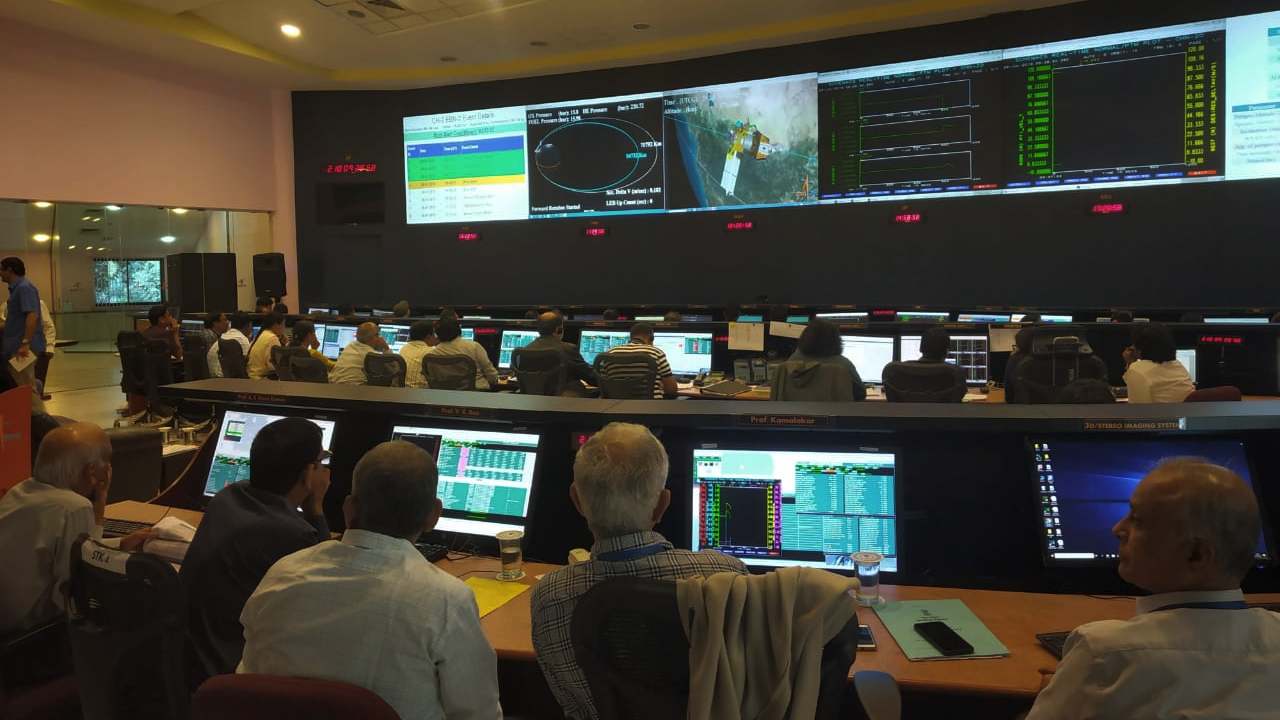tech2 News StaffSep 07, 2019 21:22:02 IST
Sixteen hours after the Indian Space Research Organisation witnessed an improbable turn of events at the planned soft-landing of the Vikram lander around 2 am this morning, it has released a statement about the current status of the orbiter and lander.
ISRO is still yet to confirm that the lander crash-landed, only revealing that there was a “the loss of communication with the Lander” towards the end of its descent. But the statement did reveal a possible change in the orbiter’s mission life, from one year to a proposed 7 years based on the amount of fuel it still has.
“Chandrayaan 2 was a highly complex mission…a significant technological leap compared to the previous missions of ISRO,” the statement reads. “This was a unique mission which aimed at studying not just one area of the moon, but all the areas, combining the exosphere, the surface as well as the sub-surface of the moon in a single mission.”
Since the launch of Chandrayaan 2 on 22 July, India and the world watched its progress from one phase to the next, with expectations and excitement.
Also read: Support pours in for ISRO as scientists try to figure out what went wrong with Chandrayaan 2 landing

Glimpse inside ISRO’s control room during landing module’s first in-orbit manoeuvre on 3 September. Image: ISRO
The orbiter, which was the only tried-and-tested element in the mission (and home to the most payloads of the three components), is already in its intended orbit to carry out what it was designed to.
“The Orbiter…shall enrich our understanding of the moon’s evolution and mapping of the minerals and water molecules in the Polar Regions. It will use its eight state-of-the-art scientific instruments to do so,” ISRO said.
The results from Chandrayaan 2’s orbiter could support lunar exploration for as long as seven years, instead of the planned one year.
“The Orbiter camera is the highest resolution camera (0.3m) in any lunar mission so far and shall provide high-resolution images that will be immensely useful to the global scientific community. The precise launch and mission management has ensured a long life of almost 7 years instead of the planned one year,” the statement said.
The most highly-anticipated piece of news, though, about whether the lander crash-landed, as many experts are speculating, or whether the issue was only a communication failure, wasn’t explicitly clarified by ISRO.
Instead, the agency announced that the mission was a 90-90 percent success to date, since the success criteria included several proof-of-concept technologies like the variable-thrust propulsion technology used in the lander.
“The Vikram Lander followed the planned descent trajectory from its orbit of 35 km to just below 2 km above the surface. All the systems and sensors of the Lander functioned excellently until this point and proved many new technologies such as variable thrust propulsion technology used in the Lander,” ISRO concludes in the statement. “The success criteria was defined for each and every phase of the mission and till date 90 to 95 percent of the mission objectives have been accomplished and will continue contribute to lunar science, notwithstanding the loss of communication with the Lander.”
Find our entire collection of stories, in-depth analysis, live updates, videos & more on Chandrayaan 2 Moon Mission on our dedicated #Chandrayaan2TheMoon domain.
Post a Comment